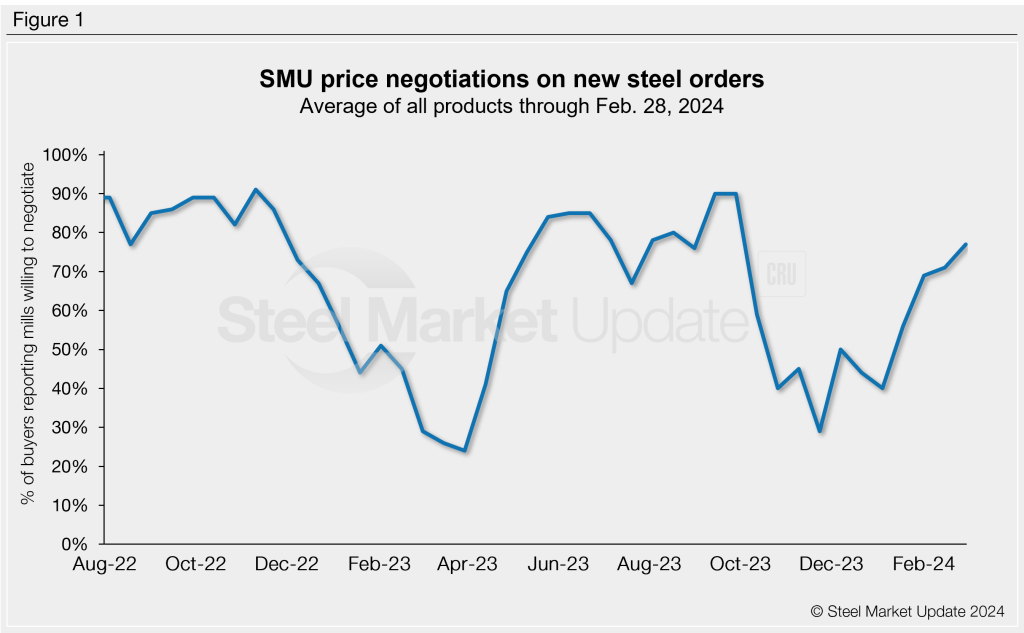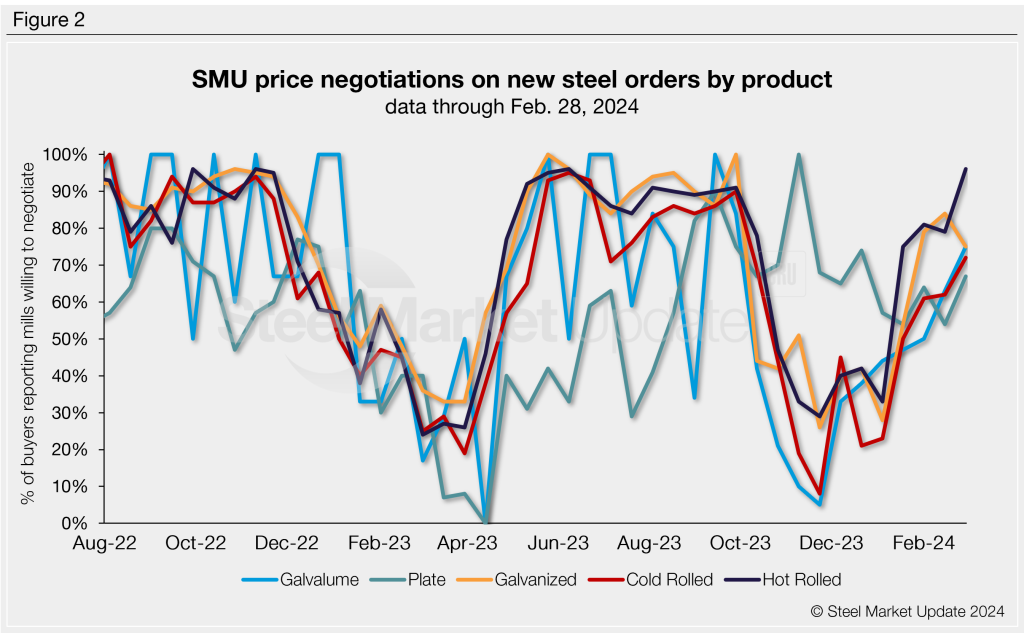SMU Data and Models

SMU survey: Mills more willing to negotiate lower spot prices
Written by Ethan Bernard
February 29, 2024
Steel buyers generally found mills more willing to negotiate spot pricing on the sheet and plate products SMU tracks, according to our most recent survey data.
Every two weeks, SMU asks steel buyers whether domestic mills are willing to negotiate lower spot pricing on new orders.
This week, 77% of participants surveyed by SMU reported mills were willing to negotiate prices on new spot orders, up from 71% at the last market check (Figure 1). The overall rate has been rising since the beginning of January, when it stood at 40%.

Figure 2 below shows negotiation rates by product. The rate for hot rolled jumped to 96%, up 17 percentage points from 79% at the previous market check. Cold rolled rose 10 percentage points to 72%. Galvalume was up 12 percentage points to 75%. And plate was up 13 percentage points to 67%.
The one exception was galvanized, which fell nine percentage points to 75% of respondents saying mills were willing to talk price vs. two weeks earlier.

Here’s what some survey respondents had to say:
“Very willing to negotiate (on hot rolled) for decent tonnage.”
“Everything is a negotiation right now.”
“Very limited (on willingness to negotiate on cold rolled).”
“Hot-dipped galvanized is tight.”
“Yes, (willing to talk price on hot rolled) but limited, drawing the line quickly.”
Note: SMU surveys active steel buyers every other week to gauge their steel suppliers’ willingness to negotiate pricing. The results reflect current steel demand and changing spot pricing trends. SMU provides our members with a number of ways to interact with current and historical data. To see an interactive history of our steel mill negotiations data, visit our website.

Ethan Bernard
Read more from Ethan BernardLatest in SMU Data and Models

SMU Survey: Sheet lead times ease further, plate hits one-year high
Steel buyers responding to this week’s SMU market survey report a continued softening in sheet lead times. Meanwhile, plate lead times have moderately extended and are at a one-year high.

SMU Survey: Buyers report more price flexibility from mills
Nearly half of the steel buyers responding to this week’s SMU market survey say domestic mills are showing increased willingness to negotiate pricing on new spot orders. This marks a significant shift from the firmer stance mills held in prior weeks.

SMU Survey: Buyers’ Sentiment Indices fall
Current Sentiment Index dropped six points to +42 this week compared to two weeks earlier. It has fallen in every successive survey since reaching a 2025 high of +66 on Feb. 19.

March service center shipments and inventories report
Steel service center shipments and inventories report through March 2024.

Apparent steel supply contracts in February
The amount of finished steel that entered the US market in February receded from January’s peak, according to our analysis of Department of Commerce and American Iron and Steel Institute (AISI) data.
